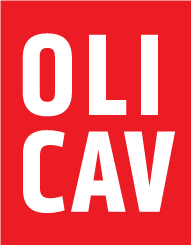This is the first in a series of posts about books from my library that influence my aesthetics and ideas about graphic communication.
Starting off is this beauty. I bought it after I had completed half my Dual Coding book but realise it looks as if it strongly influenced its design. I have chosen this book, not because it is about architecture but because the way the book is designed, and how the precisely organised text is complemented by the hand-drawn sketches. You get an immediate sense of both by the cover. The title sits integrated within the sketch, and has a clear typographic hierarchy. By using two weights (the different thicknesses of the letters), a hierarchy is established without having to resort to different sizes. You also sense the aesthetics of this type of sketching. The lines are bold and, yet, have a ‘wobbliness’ that emphasises their direct human, non-digital execution.
Below is the contents page. Now, this I did directly use to design the reference pages of the Dual Coding book. Its precision and clarity made an immediate impact on me. And, as I had long wanted to rethink and redesign how academic references were presented, the idea of adapting this soon followed my initial viewing.
And, below, is a first mock-up of the Dual Coding references, that was later expertly applied by John Catt publishers.
Now comes a couple of pages from the book itself. You will see how a design grid doesn’t enforce a never-changing conformity. Both pages are different and — here’s the important message — the same. The commonality of the layout makes reading easier. There is no effort in orienting oneself to a new arrangement each time you face a new double-page spread.
Notice the bolder type for the heading. Nothing more fancy is needed. In terms of sketching for information, see how a simple line drawing is all that is needed. The red identifies the component under focus. With a clear, simple line drawing such pointers stand out immediately. There is no conflicting or competing visual feature.
I’m finishing off with this page of several sketches to encourage teachers who are convinced they can’t draw to stop telling themselves this inaccurate internal narrative. Study the images and note how simple the lines are. They are not drawn with a ruler and, so, have that endearing human variance, wobbling as they go along. Typographically, note how the red type — same size and weight as the body text — successfully draws your attention to highlighted facets.





